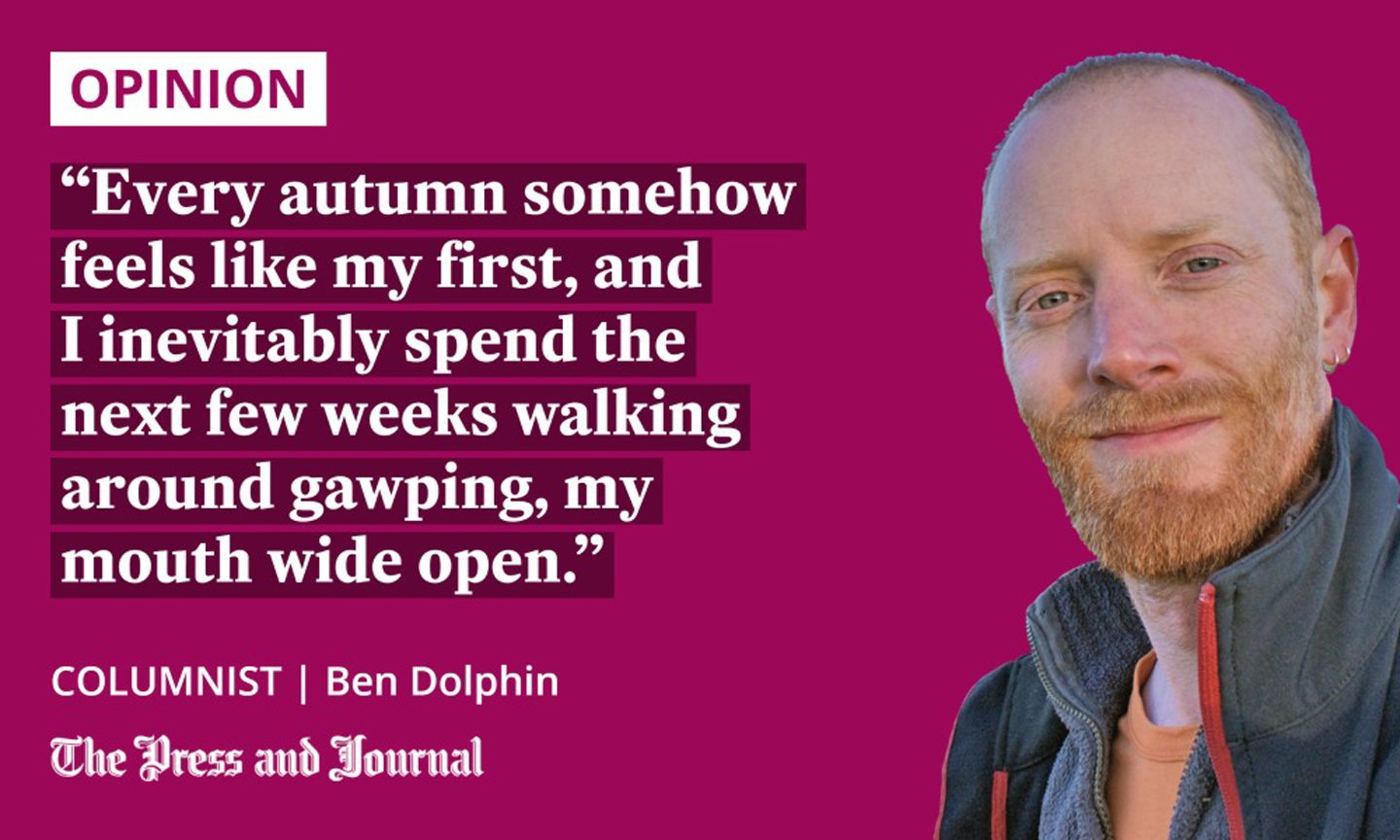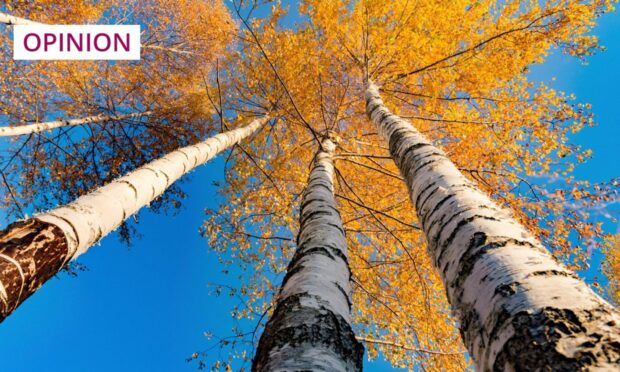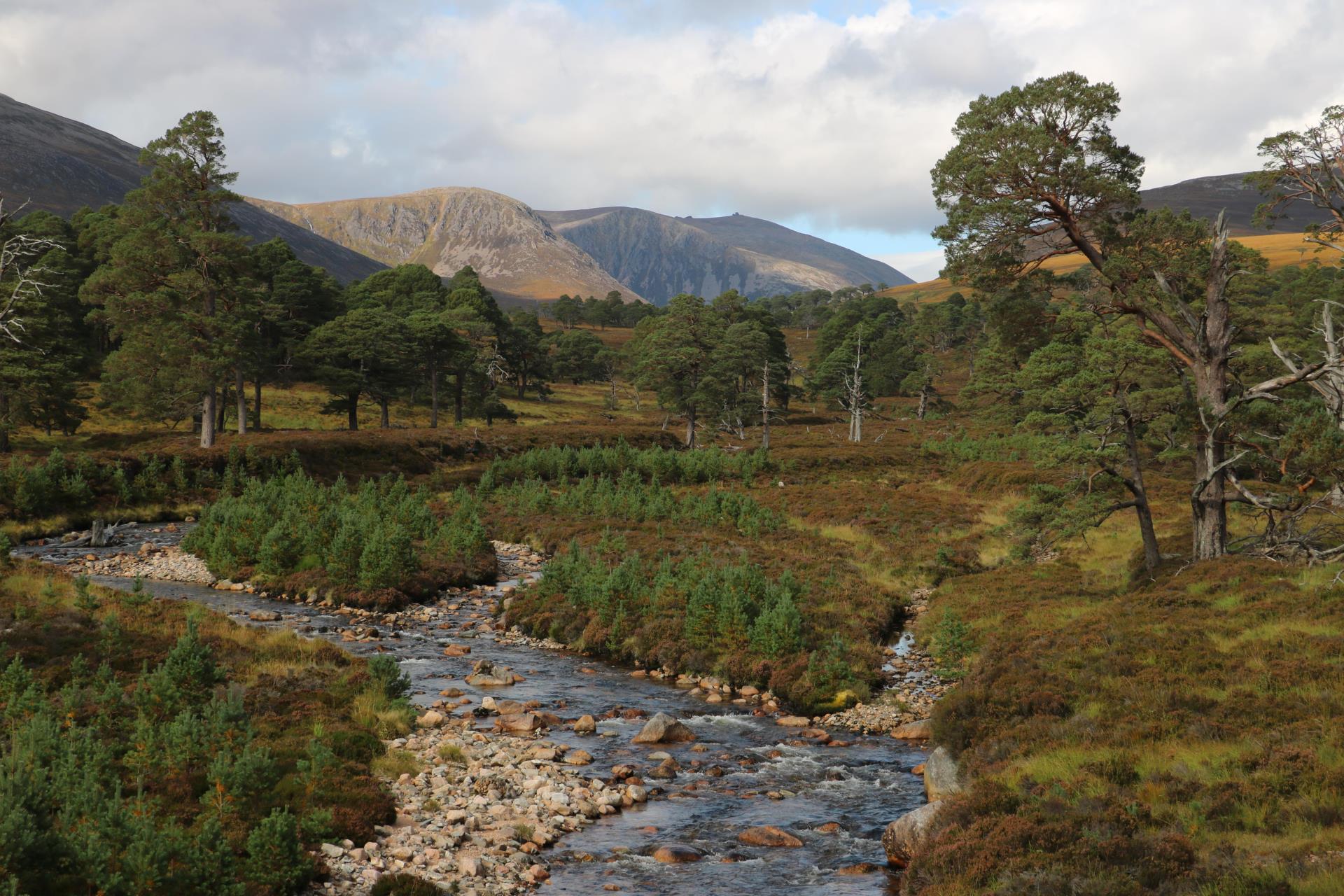I admit I have very little sense of what nature’s doing beyond the confines of Mar Lodge Estate just now, but, here at least, upstream of Braemar, autumn appears to be on steroids.
The bracken and deer grass have turned the hills a rich rusty brown, the rowans and maples have peppered the policies with traffic-light red, and the few aspen stands we have are beacons ablaze. A yellow so luminous and unnatural I can only describe it as “highlighter pen”.
The ever-reliable larch is late to the party but, for now at least, it’s really not missed because one species in particular is more than picking up the slack. The birch.

Birch always put on a good show in Scotland, turning whole hillsides a soft but confident pale yellow. There’s certainly some of that understated birch beauty around this year, but it’s fighting to be heard amongst a cacophony of louder, bolder birch yellows and, oddly, a vivid orange that I can’t recall seeing in birch before.
It’s a shade of orange that would give beech a run for its money. A beech in full flourish is undoubtedly a russet gem, but this is both paler and brighter than that. Like carrot candlesticks fizzing in the woodlands.
Our 'Slow TV' amble in Glen Quoich proved so popular that we've done another 🙂 Filmed yesterday, this one takes you on a leisurely amble around the Glen Lui Loop. No music, no commentary, no snappy edits, just one foot in front of another 🙂 Oh and such autumn colours!! 😀🍁🍂 pic.twitter.com/EoyYDucYLW
— Mar Lodge Estate (@MarLodgeNTS) October 23, 2022
Is this normal for birch? At first, I wondered whether, having spent most of my recent autumns in Fife and West Lothian where birch is less dominant and birch woodlands are small, I’m just unfamiliar with these Deeside hues.
But, I’ve spent two autumns working at Braemar before, and I don’t recall the birch looking like this. I’ve checked my woodland photos from those two autumns, and they all show soft, yellow-brown scenes. Not vivid orange ones.
Is this autumn exceptional?
Perhaps the lack of gales this autumn is responsible? Perhaps birch naturally go from green to yellow to orange, but they rarely get the chance to complete the full transition because all the leaves get blown away beforehand?
But, no, it can’t be that either, because I’ve subsequently seen birch here going straight from green to yellow and then dropping their leaves, while others are going straight from green to orange.
I’ve pretty much forgotten that the landscape can do any colour other than green, and the warm autumnal richness smacks me in the face like it’s the first time I’ve seen it
Whatever the reason, I feel obliged to declare this autumn as exceptional.
However, I can’t help feeling I say that every year. It wouldn’t surprise me if I did, because, by the time autumn colours reach the tipping point where I actually start to notice them, I’ve pretty much forgotten that the landscape can do any colour other than green, and the warm autumnal richness smacks me in the face like it’s the first time I’ve seen it. Every autumn somehow feels like my first, and I inevitably spend the next few weeks walking around gawping, my mouth wide open.
Why do leaves change colour in autumn?
The basic underlying process has the same catalyst every year – light and temperature levels falling below a certain threshold, beyond which trees stop supplying water to their leaves. Production of chlorophyll, the dominant green pigment that gives leaves their distinctive colour, ceases.
The tree then breaks down whatever is left of the chlorophyll, so that it can reabsorb it.
And then the cloud lifted this morning and……😀😀😀❄️❄️❄️😀😀😀. #cairngorms pic.twitter.com/G1Lwfi2U2W
— Ben Dolphin 🏴❄️🇺🇦 (@CountrysideBen) October 15, 2022
Other pigments, which are present in the leaves throughout the summer because they are crucial for helping absorb energy during photosynthesis, then become visible. Carotenes are orange, xanthophylls are yellow.
Different trees have different proportions of these pigments, and colours therefore vary naturally from species to species. Some trees, like cherry or maple, entice photographers with their redness. Others barely have an autumn, their leaves turning a dull brown, and their leaf-drop making woodlands look mouldy and full of decay. I’m looking at you, sycamore.
Weather determines colour changes
Autumn vibrancy is, however, determined by environmental factors throughout the year, and especially in the autumn. Red colours are produced by anthocyanins and, unlike the other pigments, they aren’t found in all tree species and aren’t actually produced until autumn itself.
They’re a result of sugars accumulating in the leaves on cool, sunny days. The longer such conditions persist, the more sugar is produced. The more sugar that’s produced, the redder the leaf gets.
Generally speaking, a wet spring followed by a “good”, sunny summer is a solid base for autumn colour. Thereafter, warm and sunny by day, cool (but not freezing) by night. If there’s an autumn drought, leaves might drop prematurely before the colours have time to develop, so rain is good… but not too much.
According to Met Office anomaly maps, summer this year was indeed very warm, sunny and dry in Aberdeenshire. But, while September stayed mild, especially at night, it was also rather wet, with less sunshine than normal. Data for October isn’t yet in, but it certainly feels like it’s been a wet and a dull one.
All of which helps us conclude that Upper Deeside has its own unique and elusive recipe for perfect autumn colour!
Ben Dolphin is an outdoors enthusiast, countryside ranger and former president of Ramblers Scotland


Conversation